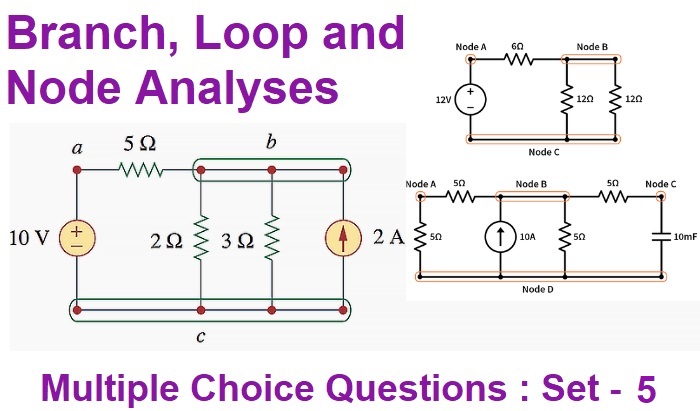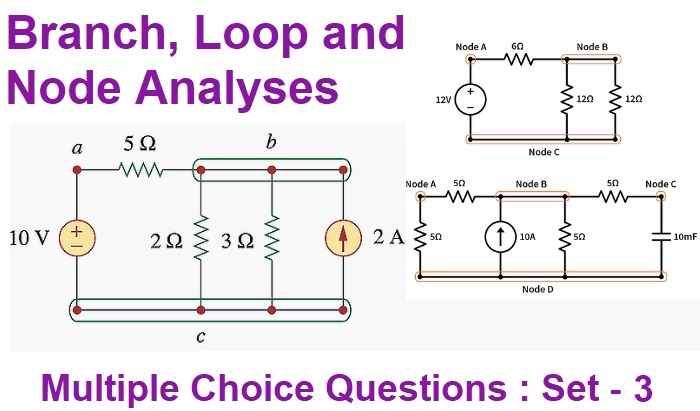Nodal Analysis with Current Sources
Nodal Analysis with Current Sources
Consider the network of Figure (a) as given below, which has two current sources and three nodes out of which 1 and 2 are independent ones whereas No. 3 is the reference node.

The given circuit has been redrawn for ease of understanding and is shown in Figure (b) given below.
The current directions have been taken on the assumption that
1. both V1 and V2 are positive with respect to the reference node. That is why their respective current flow from nodes 1 and 2 to node 3.
2. V1 is positive with respect to V2 because current has been shown flowing from node 1 to node 2.
A positive result will confirm out assumption whereas a negative one will indicate that actual direction is opposite to that assumed

We will now apply KCL to each node and use Ohm’s law to express branch currents in terms of node voltages and resistances.
Node 1 :
I1 − I2 − I3 = 0 or I1 = I2 + I3
Now I2 = (V1/R1)
∴ I3 = (V1 – V2) /R3

Node 2 :
I3 − I2 − I4 = 0
or
I3 = I2 + I4
Now,

∴ 
The above two equations can also be written by simple inspection. For example, Eq. (i) is represented by
1. product of potential V1 and (1/R1 + 1/R3) i.e. sum of the reciprocals of the branch resistances connected to this node.
2. minus the ratio of adjoining potential V2 and the interconnecting resistance R3.
3. all the above equated to the current supplied by the current source connected to this node.
This current is taken positive if flowing into the node and negative if flowing out of it (as per sign convention of Article : Determination of voltage sign). Same remarks apply to Eq. (ii) where I2 has been taken negative because it flows away from node 2.
In terms of branch conductance, the above two equations can be put as
V1 (G1 + G3) − V2G3 = I1 and V2 (G2 + G3) − V1G3 = − I2
Read article –Determination of voltage sign
Visit NCERTplanet.com for NCERT solutions and Textbook downloads



